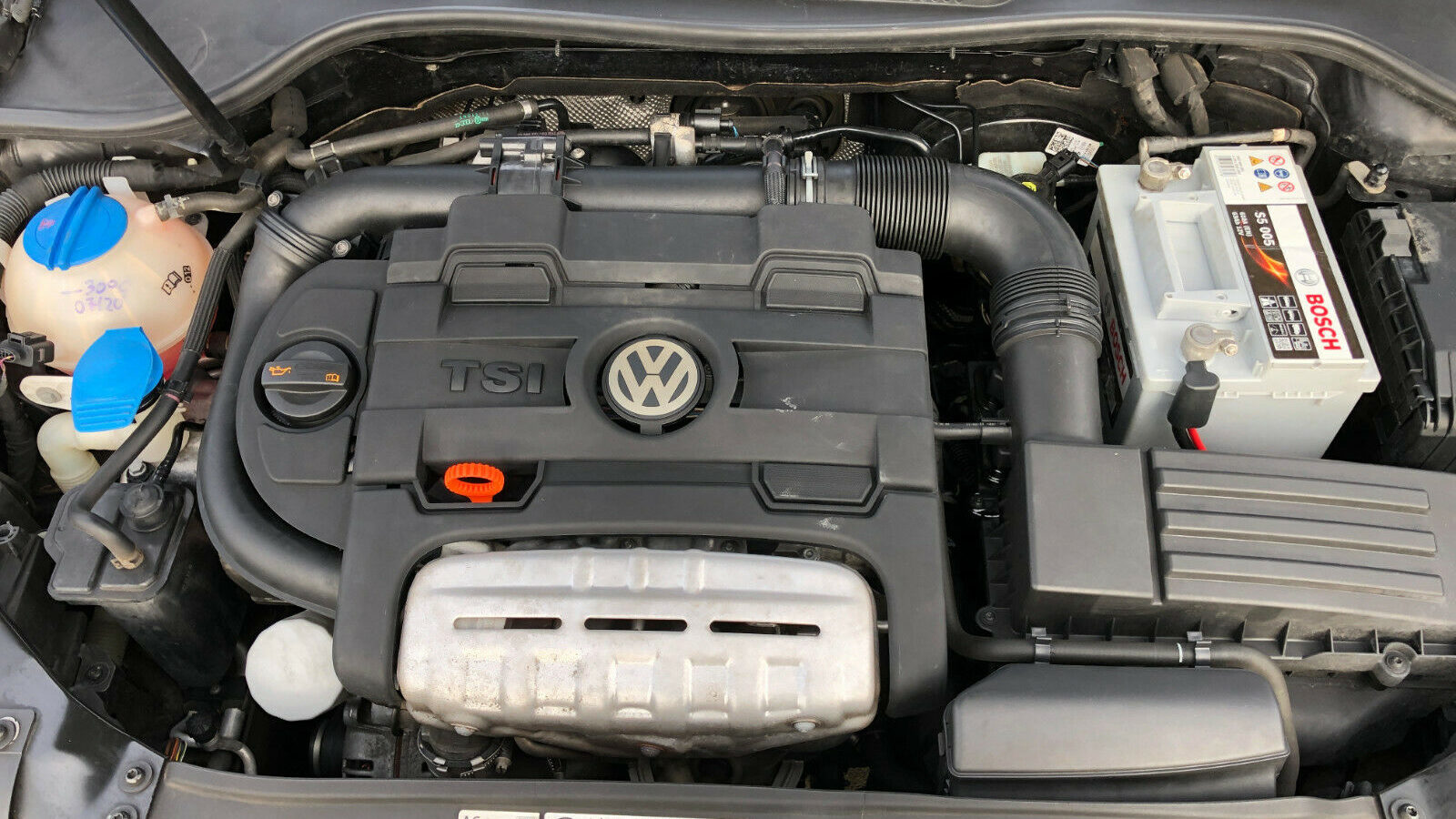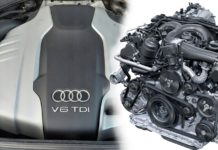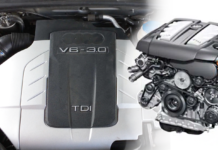Petrol engines

From the petrol engines the most reliable are the older 1.4 l and 1.6 l naturally aspirated units (timing belt, port injection, no turbo). They can easily withstand 300 000 km or more with regular maintenance only. However they are not powerful at all and it’s worth mentioning that after approx. 200 000 km or 250 000 km you can experience bigger or smaller oil consumption.
Then there is the 2.5 l 5 cylinder engine available in the US which is great! It’s reliable, powerful and a fairly simple unit (timing chain-usually ok, port injection, no turbo) so all I can say is: buy it if you can!
of course the classic petrol engine issues like the faulty spark plugs/ignition coils, vacuum leaks, faulty PCV or some minor oil leaks can occur even on these most reliable engines, but that’s nothing unusual and all of this is cheap to fix
But from now on it’s gonna be nothing but downhill on a highway to hell! Well, almost.
1.2 TSI 86hp / 77 kW & 105 hp / 77 kW
1. Timing chain
The the timing chain mechanism of this engine is made from boiled potatoes basically. It’s because in plenty of cases it was and it can be worn even before 100 000 km, and in fact in the earlier cars made to 2011 it was sometimes replaced even at 30 000 km or as early as 20 000 km! So nobody knows when your chain is gonna rattle, skip a tooth or when it’s gonna damage your engine.
2011 Update: a bit positive thing is, that these engines made from mid 2011 do have an updated chain installed. However this was not enough, so in late 2011 they did another update of the chain – now they started to use a wider more durable chain (+they updated the engine block and the cylinder head too), so if you really want this engine then the best is to buy it only from 2012. But even the updated chain can get worn earlier then it should, so the best is to find a mechanic familiar with these engines who is able to measure how badly is the chain worn.
Worn chain symptoms: strange usually rattling noises from the engine at cold start – or at idle or constantly, check engine light with uneven engine running/rough idle/misfiring, but it can fail suddenly too and cause damage to the engine – bent valves and shit.
Make sure that while replacing the timing chain you replace also the oil pump drive chain = since there is no chain tensioner on it, so there is a higher chance that this chain also gets worn and loose.
2. Turbo wastegate actuator
The next problem of this tiny engine can be with the faulty turbo wastegate actuator which will cause loss of power, limp mode, fault codes, check engine light and shit. But in this case the actuator arm can be only stuck, so before replacing the actuator itself it’s worth to first disassemble the actuator and try to free up the things.
wastegate actuator test – video
3. Oil dilution
Interestingly, this engine is more prone to oil dilution with fuel. Here it’s good to clarify that during cold running every direct injection petrol engine lets some amount of fuel into the oil. Usually it’s just a small insignificant amount, but in this engine it’s higher since it has a longer “cold phase”- basically the engine runs rich for a longer time until it heats up properly. So if you will use this engine for very short distances only, then you will experience that the fuel will slowly get into the oil – which is not very good in the long term.
+there are numerous cases of damaged wiring of the spark plugs in early engines (this will cause misfires)
4. Some positive things about this engine
- these engines don’t have much issues with carbon build up – because there is no EGR
- engines made from 2012 have the latest chain revision which in a lot of cases can withstand 200 000 km
- measuring how much is the chain worn on this engine is easy, but you need to find a mechanic who can do it
1.4 TSI 122 hp / 90 kW
The 1.4 l TSI with 122 hp is overall a better engine than the 1.2 TSI, so you are not gonna make a big mistake buying it. However even this unit can have issues with the prematurely worn timing chain. In this case you can expect this issue mostly between 100 000 km and 150 000 km. But in some cases the chain mechanism can be worn even earlier than 100 000 km, again mostly in the cars made to 2011. So it’s a good idea to measure how badly is the chain worn on this engine as well.
1.4 TSI 160 hp / 118 kW (Twincharger)
This engine is basically the worst engine you can choose in these cars – reliability wise. On the other side, the performance of this unit is great since it’s equipped with a turbocharger and also with a compressor. But the various possible issues of this engine are not that good as the performance:
1. Timing chain
Again let’s start with the damn timing chain which can be worn mostly between 100 000 km and 150 000 km, but there are also cases of worn chain mechanism even before 100 000 km = mainly in cars made to 2011. So again, the best is to measure how badly is the chain mechanism worn.
2. Compressor clutch
The next issue of this engine is related to the compressor, specifically to the magnetic clutch of the compressor – which can fail even before 100 000 km causing weak engine performance, since the compressor is not gonna be engaged (limp mode/loss of power, fault code: P10a9 – 04265). In this case you will have to replace this clutch which is connected to the water pump.
how to replace the compressor clutch video
3. Piston crack
But let’s move onto the most interesting issue this engine can have which is related to the pistons. Specifically the side of the pistons can crack and also break off basically, even before 100 000 km.
Symptoms:
- misfires because of low compression
- rough idle / vibrations at idle
- loss of power
- excessive oil consumption
- a check engine light can be also present
- shuddering/jerking during acceleration or steady speed-because of misfires
- knocking/rattling noise from the engine during acceleration and later you won’t be able to start the engine at all.
If you don’t have any of these symptoms or if they are still barely noticeable (the crack can be very small in the beginning) then the best way to check for a cracked piston is to measure the compression of the cylinders. (this is cheap, fast and effective, and if the compression on one cylinder is gonna be lower than on the others, then you most probably have a crack on that particular piston)
Replacing the pistons and all the other necessary stuff(-head gasket, reconditioning of the cylinder head, new timing chain, gaskets) costs around 3 000 € – 3 500 € at an independent mechanic, so I would not recommend choosing this engine if you don’t have the extra money to fix this!
GTI – 2.0 TSI 211 hp / 155 kW
The regular GTI version is equipped with a 2.0 l TSI engine which can have a couple of problems too:
1. Timing chain
In this case again the damn timing chain mechanism can be a bit problematic. Specifically the very first weaker version of the timing chain tensioner can fail and damage your engine even before 100 000 km. However in mid 2012 VW updated the tensioner which is much better and which can withstand a longer time and actually, plenty of these cars do have already the updated tensioner installed by the previous owners. But, it’s definitely good to check visually the tensioner thru an inspection hole on the side of the engine if you don’t know which tensioner you got. There is a noticeable difference between the old and the new updated tensioner.
2. Camshaft bridge
The next problematic part of this engine is called the camshaft bridge which can occasionally cause oil starvation in the cylinder head or other damage if a small screen falls out from it. The good thing is that only the cars made to 2009 are more prone to this-since they have the earliest version of the camshaft bridge. But the bad thing is, that the cam bridge was revised more than 3 times so the screen can fall out on later cars as well !
3. Intake manifold
Then there is the plastic variable intake manifold which can be faulty. This is a complex plastic garbage with moving plastic flaps in it which can wear out and fail and shit + it can also cause vacuum leaks, so be prepared to replace it with a newer, better and more sturdy updated part. Faulty intake manifold symptoms: loss of power, misfires/rough idle, P2015 (P215) fault code, eventually check engine light.
By the way, while you are replacing the intake manifold you should also: replace the injector seals, pull the injectors out and check them for carbon build up/eventually have them tested + an intake valve carbon cleaning is also a good idea while all this stuff will be removed.
how to replace the intake manifold video
4. PCV
Next there is the pcv valve which can be often faulty before 80 000 mi. In this case it can break internally or it can be clogged, so in other words: it can cause a vacuum leak or it won’t let the excess pressure out of the engine. However it doesn’t really matter how exactly it can break, what matters is, that it’s good to replace it preventively since it can blow the rear main seal which starts to leak oil and that’s an expensive repair ($1 000-2 000 fix), so before buying it’s good to check for an oil leak between the engine and gearbox. (It’s very easy to replace the pcv valve, since it’s on the top of the engine)
1.8 TFSI 160 hp / 118 kW
The infamous 1.8 l TFSI was also available in this Golf even though it’s pretty rare. And that’s good, because I would stay away from it since this engine can have issues with:
- prematurely worn timing chain mechanism with a weak chain tensioner
- cam bridge screen
- PCV
- intake manifold
- classic direct injection issues
- + excessive oil consumption because of badly designed piston rings
GTI edition 35, Golf R
Lastly there is the Golf GTI edition 35 and the Golf R. The best for last? Well kind of, since both of these models have a 2.0 l TSI engine which is much better than the engine in the regular GTI. It’s because this more powerful unit has a timing belt instead of a timing chain and it also has a slightly different – better intake manifold. The only thing worth mentioning is the HPFP cam follower which can get worn. + The PCV can fail too, but that’s not really surprising. So these models are a good choice unless of course the previous owner was a “racing driver”.
Other issues related to TSI engines
To finally end this journey of engine hell, I have to mention that all of the direct injection petrol engines can have often issues with leaking water pump so check the coolant level regularly!
+ Let’s not forget about the classic direct injection engine issues, so:
-You can expect a noticeable amount of carbon build up on the intake valves sometimes even at 50 000 mi / 80 000 km – but this of course depends on how was the car used. (So if it was used mostly for long distances with regular oil changes then it can be ok, but if the car was used for short distances then the carbon build up can be pretty major)
–Faulty, clogged or leaking injectors can occur /symptoms: misfires, loss of power, illuminated check engine light/
–Ignition coils can fail too, mainly if you don’t change your spark plugs early /symptoms: misfire/ (the best is to replace the spark plugs every 40 000 km)
-The HPFP can occasionally break + rarely it can leak fuel into the oil /symptoms: check engine light, limp mode/loss of power, long cranking, fault codes P0087, P053F, P0139, misfires, the engine shuts off by itself-stalling, the engine won’t start/
–Oil consumption can be occasionally present in all of these direct injection engines. Sometimes it’s caused by a faulty PCV, sometimes by clogged piston oil scraper rings – although it’s not like very common.
–Faulty turbochargers can occur, but usually just in more abused or high mileage cars.
Vacuum leaks are gonna occur sooner or later on all the petrol engines including the simple port injection units, so be ready for cracked plastic or rubber vacuum hoses and faulty PCV.
on the next page: DIESEL ENGINES, TRANSMISSIONS














Hi, would you know what causes this sound? https://www.youtube.com/watch?v=fhXtOmbjTSQ
INJECTOR 2 FAILED TODAY @ 107K MILES!
ON THE CAY 2012 ENGINE 1.6TDI